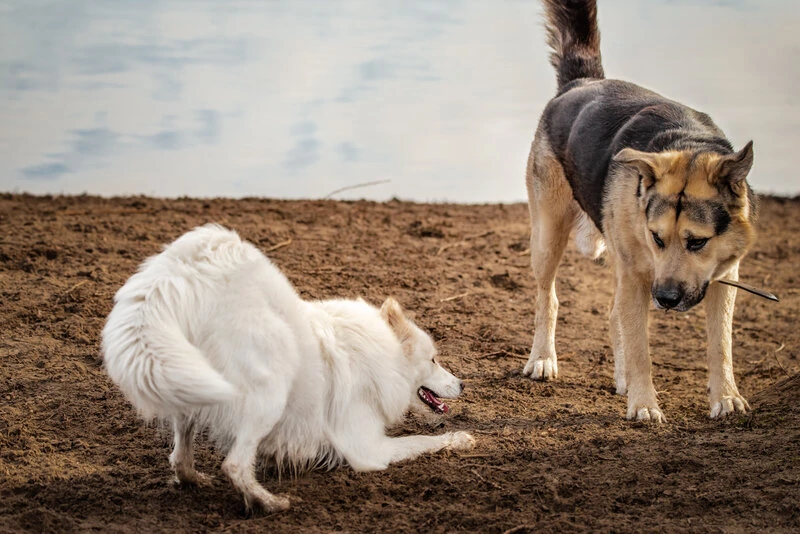
How many times have you thought, “I wished my dog could just speak to me so I knew what s/he’s trying to say?!?” The great news is your dog is speaking to you all the time. The only difference is that dogs use body language, with the support of minor vocalizations.
Learning to understand a dog’s body language is an essential foundation of “dog training,” and also supports your ability to understand other people’s dogs, particularly those who are less behaved than your own.
There’s a misnomer that a wagging tail is a happy tail. That’s not always the case. Dogs also express anxiety, agitation, or pending aggressing with tail motions. Pay close attention to how your dog moves its tail:
Whatever the wag may be, the faster the wag the more excited the dog is, and even an excited happy dog can cause damage to people, places, or things, so we aim to keep dogs at a calm and happy level except for designated exercise and playtime.
Take a peek at your dog’s eyes in various situations. When a dog has:
Don’t get too close, but the mouth is another source of communication.
Any growling is a sign of nervousness and potential aggression, and it will escalate and become a warning or aggressive bark if the threat doesn’t retreat or isn’t addressed.
Even floppy-eared dogs communicate with their ears. You just have to keep your eyes focused on the base of the ear to read the signs being displayed. Relaxed dogs have ears that are relaxed, and the ears are centered or positioned just slightly backward. The more interested and engaged they are in something, the more their ears move forward. This can be a good forward or anxious/aggressive forward depending on the situation. When dogs are especially fearful or threatened, their ears move far back (or even flat) against their head.
When dogs feel protecting, aggressive, or even fearful (disguised as aggressive), their skin gets “goosebumps” that raise the hair on a particular pattern. Slight feelings of alertness may only show up right on the neck or at the base of the tail. A dog with a “mohawk” or raised hackles from tip to tail is on high alert.
So, we’ve covered some of the acute parts of body language, but it’s better to consider the whole. For example, your boss may smile at you from his desk, but that doesn’t always mean he’s feeling friendly, right? Looking at the whole dog is the best way to discern their mood. The more you know how to read your dog and react accordingly, the fewer behavioral problems you’ll have over time.
Take in the dog’s general body stance. A dog that is crouched or low to the ground is highly nervous and afraid. A dog that’s leaning forward with the majority of its weight on the front paws is trying to get closer to something or is preparing to spring. If the forward motion is accompanied by a neutral wag and open expression, he’s excited. If, however, that open stance is accompanied by raised fur/hackles, “gruffing”/growling, or bared teeth, he’s probably feeling aggressive.
Dogs may have a rapidly waving and upright tail, indicating nervousness. If, however, that wag is accompanied by the play bow (head down, tail out, with happy hops and lunges), their ready to play or is letting the person/dog/cat know, “Hey! I’m open to hanging out!”
If your dog is content, he’ll lean into you when you’re petting him and then quickly plop down on the floor at your feet or amble off to lay down in his bed or to play with favorite toys. Excessive requests for attention should not be catered to, although it may be that your dog isn’t getting enough exercise time and has extra energy s/he needs to vent.
Are you struggling to understand your dog’s body language? Do you have a dog that is prone to anxiety, fear, or aggression? If so, contact Alternative Canine Training, and let’s have a conversation. The sooner you both learn to connect with one another, the better off your relationship will be in the long run.